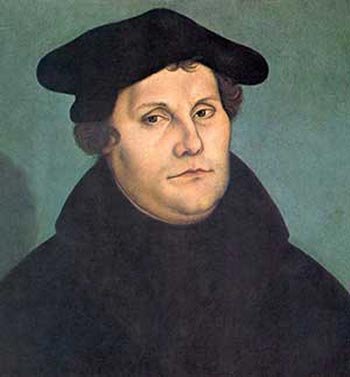The Reformation

Martin Luther
Whenever we think of the Reformation our minds immediately go to that great servant of God, Martin Luther. In fact, the Reformation was made up of literally hundreds of faithful believers who prepared the way for reformation, participated in the reformation and propagated the reformation after it was introduced.
These reformers were also restorationists, in varying degrees – but all of them played a role in some aspect of restoration as they sought to bring the church into line with Scriptural revelation and deliver Christianity from the corruptions, additions and subtractions of men which had polluted the church of Christ.
These are the main players in the story of Reformation:
Martin Luther – born 1483
Huldrych Zwingli – born 1484
Thomas Cranmer – born 1489
Henry VIII – born 1491
Martin Bucer – born 1491
William Tyndale – born 1494
Menno Simons – 1496: is born.
Philipp Melancthon – born 1497
Hans Denck – born 1500
John Calvin – born 1509
John Knox – born 1513
Timeline of the Reformation:
1516 Froben of Basel prints Erasmus’s Greek New Testament.
1517 Luther writes 95 Theses; printers spread copies throughout Germany.
1519 Zwingli begins New Testament sermons; Swiss reformation starts.
1520 Luther writes ‘To the Christian Nobility, On the Babylonian Captivity of the Church, and The Freedom of a Christian.
1521 Luther is excommunicated at Diet of Worms.
1521 Religious unrest begins in Wittenberg: private Masses are abolished, Karlstadt serves Communion to the laity in both elements, religious statues are destroyed.
1522 Zwingli argues his first Reformation debates
1523 First two Reformation martyrs are burned at the stake in Belgium.
1525 Anabaptist movement begins in Zurich; spreads to Germany.
1526 Reformation spreads to Sweden and Denmark.
1527 Luther writes against Zwingli on the Lord*rsquo;s Supper; printer Hans Hergot is executed.
1527 First Protestant university (Marburg) is founded.
1530 Melancthon presents Augsburg Confession, a statement of Lutheran beliefs.
1531 Zwingli dies in battle at Kappel.
1533 Thomas Cromwell declares Henry VIII’s marriage to Catherine null and void; Henry marries Anne Boleyn.
1534 Henry VIII declares himself supreme head of Church of England
1535 Anabaptist uprising at Münster put down and Anabaptists executed; Thomas More beheaded for opposing Henry VIII.
1536 First edition of Calvin’s Institutes published.
1536 William Tyndale is burned at the stake; Henry VIII begins to dissolve the monasteries; Anne Boleyn is executed; Henry marries Jane Seymour, who dies in 1537 after giving birth to the future Edward VI.
1538 Geneva expels Calvin.
1541 Calvin returns to Geneva from exile.
1541 At Conference of Regensburg, Melancthon and Bucer reach agreement with Catholics on most doctrines, but Luther and Rome reject their work.
1542 Paul III establishes the Inquisition.
1545 Council of Trent, for reform of the Catholic Church, opens.
1546 Luther dies.
1547 Henry VIII’s Protestant son, Edward VI, succeeds him.
1548 Augsburg Interim makes some concessions to Protestants in Germany, but many Catholic and Protestant leaders refuse to accept it.
1549 First edition of the Book of Common Prayer is published.
1549 John Knox is released from French imprisonment.
1553 Edward VI’s Catholic half-sister, Mary, succeeds him.
1554 Knox travels to Geneva and meets Calvin.
1555 Peace of Augsburg allows German rulers to determine religion of their regions; Mary burns Hugh Latimer, Nicholas Ridley, and Thomas Cranmer at the stake.
1558 Mary’s Protestant half-sister, Elizabeth, succeeds her.
1560 Scottish Parliament abolishes Catholicism in Scotland in the “Reformation of 1560.”
This timeline is adapted from Christian History magazine #118 The People’s Reformation. Read it in context here.



